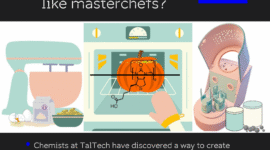As women have children later in life, fertility becomes a hot topic. A study looks at how DNA and lifestyle determine fertility and menopause age.
When Dr Liisa Loog was pregnant with her daughter, she suffered from nausea. She felt so poorly that she had to be hospitalized several times.
In her emergency bed, Loog researched for an explanation as to what was happening to her but couldn’t find the answers she was looking for. Women – especially pregnant women – are commonly excluded from research. With that, her mind drifted to an even hotter topic than nausea – fertility. As women have children later in life, becoming pregnant is increasingly difficult, and again – the topic is surprisingly under-researched.
As an evolutionary geneticist and anthropologist with a PhD degree from Oxford University and two postdocs in her CV, Loog finds her own answers. She can pull the DNA of hundreds of thousands, both the living and the dead, to answer her questions.
As a Marie Skłodowska-Curie Action Postdoctoral Fellow at the University of Tartu, Loog is now studying what affects fertility and menopause age.
Unexpectedly, Loog got some clues looking at height.
A peek back 10,000 years
Estonians are among the tallest people in the world. But why are some populations taller than others? Scientists have long wondered what determines that – is it nurture or nature?
Loog looked into height in her previous research.
It is a common misconception that people have been getting taller with each generation. Actually, archaeological finds and DNA extracted from remains of ancient individuals show that people became shorter when they took up farming, Loog explained. European hunters and gatherers, who preceded the first farmers, used to be as tall as we are now.
Ancient DNA collections enable us to go 10,000 years and more back in time. “Using ancient DNA data, we can see how the harsh conditions caused by wars, famines, and large-scale population movements have affected people’s genetic height and many other traits,” said Loog.
To her, this genetic data from archaeological remains revealed something even more interesting: when humans became shorter, many reproductive features also changed. For example, age at puberty, children’s weight at birth, and the age at menopause. “All of these things are connected,” she realised. “Although these traits have good evolutionary reasons to be tightly linked, the genetic bases behind these links are poorly understood.”
In evolution, ecology and genes usually go hand in hand. The Theory of Evolution predicts that our bodies adapt to harsh circumstances by investing less into growth and more into reproduction. So when food is scarce, and mortality rates are high, women have children earlier and in shorter intervals. Naturally, having the ability to give birth into their 50s is irrelevant for someone who may not live that long. In such circumstances, it makes sense to adapt and channel resources away from growth and focus on reproduction and fighting disease instead.
Therefore, people don’t grow tall during hardships.
Geneticists have considered reproduction and anthropometric features like height as two separate domains for a long time, even though, evolutionarily speaking, they are two sides of the same coin.
“It would be unethical to experiment with reproduction of living humans; however, looking at the genetics of historical and ancient populations, we can see how dramatic events have affected these traits,” said Loog. This information helps us to understand reproductive traits in present-day populations better.
Looking back, many more conclusions could be drawn. Still, the problem with the DNA of the deceased is that there are gaps. We can’t ask them how many children they had or when they had them.
Therefore, Loog wanted to combine this information with modern medical, genetic, and biobank data.
The buzz around gene tests
Estonia is one of the best places to carry out such research as it has one of the most comprehensive biobanks in the world. As many as every fifth Estonian adult has generously shared their genetic, health, and lifestyle information with the government-backed biobank. It includes many mothers, sisters, and daughters, making the data on fertility even more valuable. Combined with the UK biobank, Loog’s two-year study consists of data from nearly 700,000 donors.
Her aim, however, is not to start giving fertility predictions.
There is a lot of interest in predicting diseases by looking at genes. Who wouldn’t want simple, single-cause answers? Unfortunately, when it comes to complex traits, such as fertility, height, and obesity risk, there aren’t any, Loog said. The environment plays too large a factor in what we eat, drink, and breathe and how it affects us.
“Although there is a lot of buzz around genes and their potential to prevent diseases, we still know very little about what genes do and how they interact with the environment,” said Loog.
She is more interested in the biology behind genes so that we can better understand how evolution has shaped our bodies and behaviour in different circumstances.
With climate change and the obesity epidemic, we are in the midst of big changes that will likely impact fertility. Loog wants to see if there are any biological mechanisms we have overlooked. Fertility is just one example among many questions she will cover.
Dr Loog wants to bust the myth of how people usually look at genes like they are the ultimate answer to our problems. “Our genes do not determine our health, but they affect how we respond to different environmental factors and lifestyles,” she believes. The problem is that we don’t know exactly how. If we did, we could give better health advice or design our environments to promote long health and fertility spans.
The genetic material of hundreds of thousands of people alive today and their ancestors will hopefully have some answers.
Written by: Marian Männi. This article was funded by the European Regional Development Fund through Estonian Research Council.
 Back
Back



